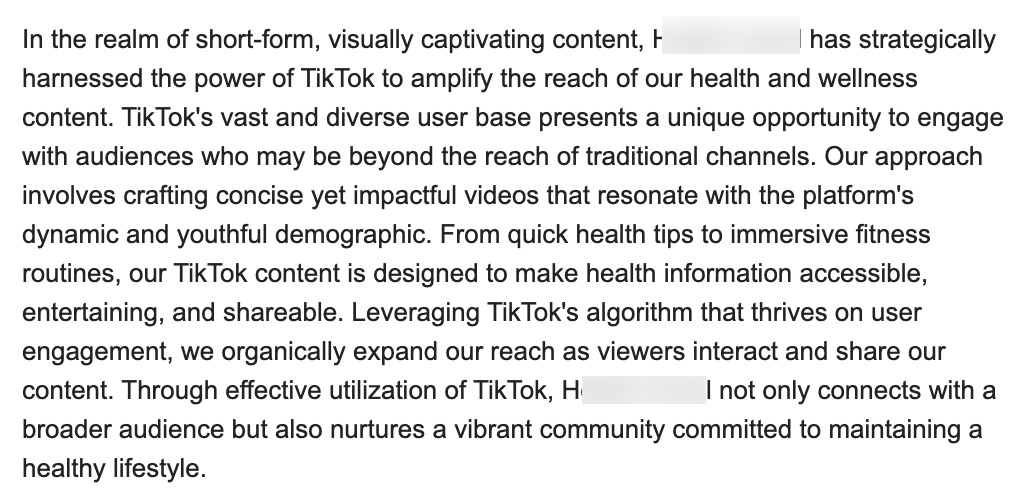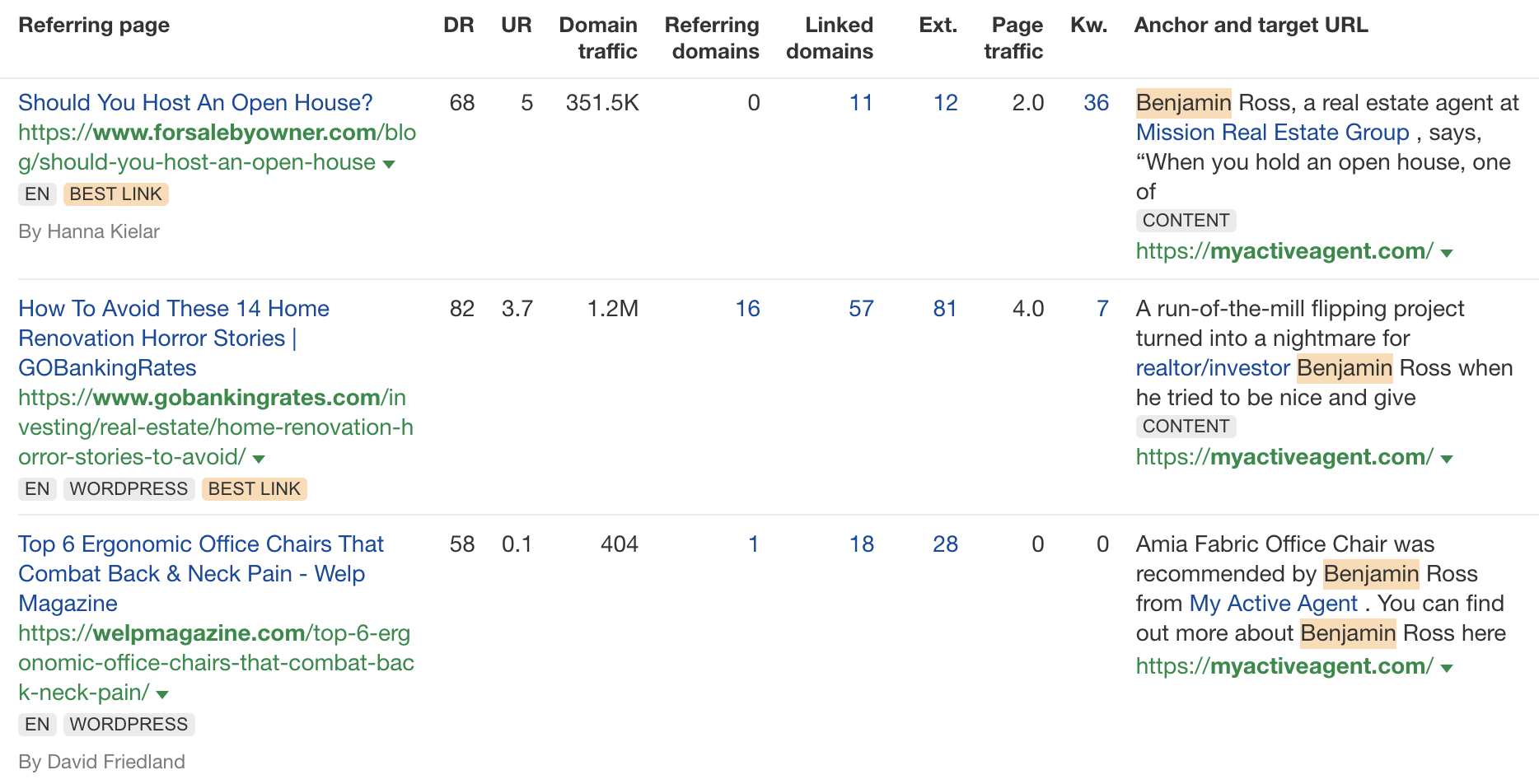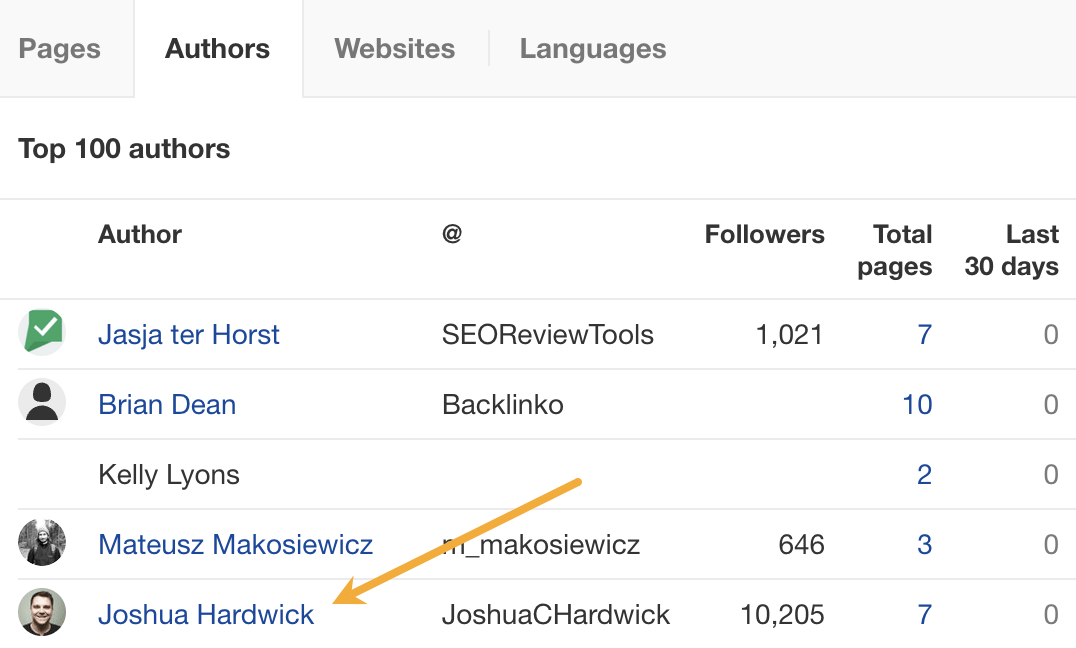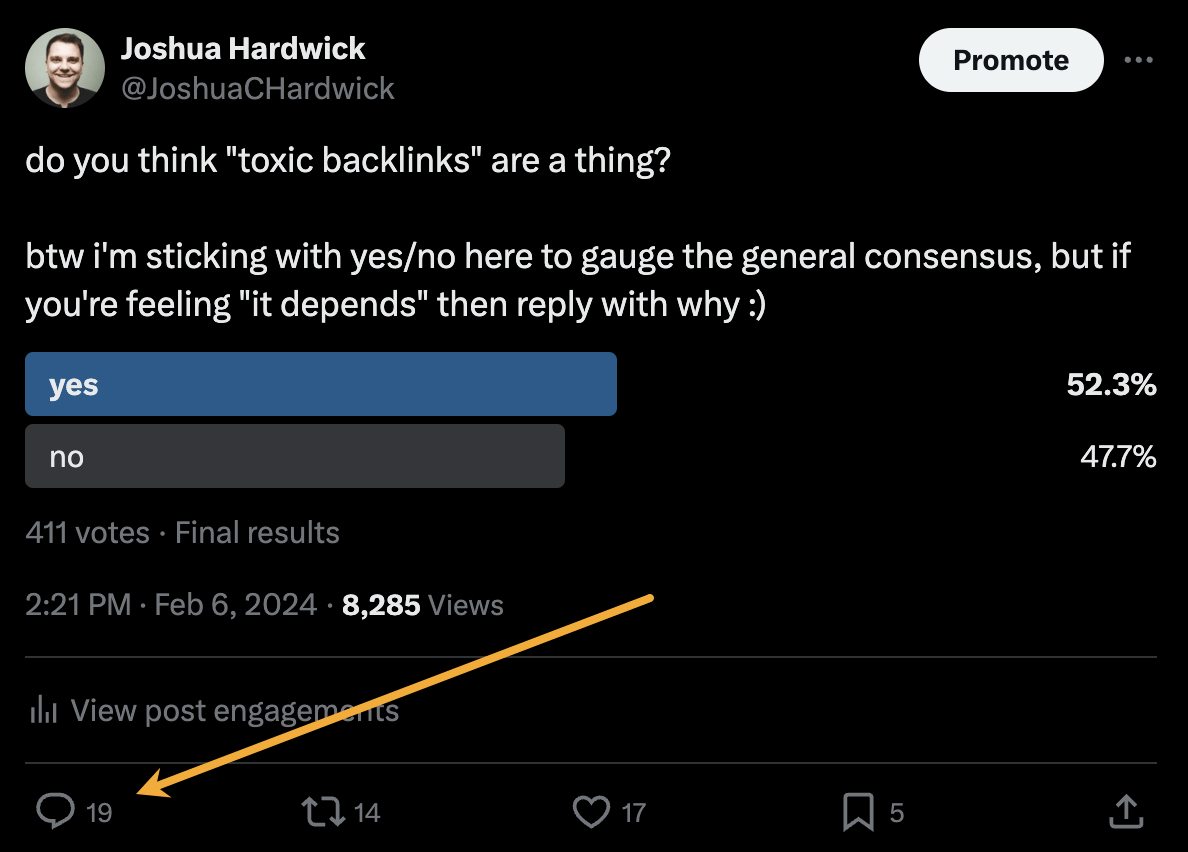SEO
The Content Marketer’s Guide to Performance Reviews

Employee performance reviews have been used in companies for decades. For employees, these reviews are an opportunity to get feedback on their work and even a raise. For managers, reviews are an important management and leadership tool.
The problem is nobody really likes performance reviews. They’re stressful, awkward, and ineffective (according to some). Yet it seems they are necessary.
So how should managers go about performance reviews in their content marketing teams? Read on to learn some basic theories and see the insights that some marketing managers shared with us.
We’re going to cover:
A performance review (also called performance evaluation or appraisal) is a process where managers assess an employee’s work performance to identify their strengths and weaknesses, offer feedback, and assist with goal setting.
A common misconception about performance reviews is that they are meant to benefit only the businesses or managers and not the employees. However, properly conducted reviews (in any form) can offer an immediate lift for all “sides.”
For businesses (and managers conducting the reviews), performance reviews are a tool for optimizing the performance of staff, strengthening leadership, creating a better alignment with the strategy, and understanding the perspectives of employees.
For employees, reviews are a way to get an overview of their strengths and weaknesses and progress. During reviews, employees can also voice criticisms, discuss career opportunities with managers, or get a raise.
A performance review, in general, is a multi-layered phenomenon, such as the obvious business performance side of things, different management theories, company policies, HR and, of course, the psychological aspect of giving and receiving a performance review in a modern workplace.
In the past, when businesses tried to prioritize some aspects over others or balance them, new types of performance reviews emerged. These days, it seems there is no consensus for a single, right way to do a performance review. Each way has its advantages and disadvantages.
If you’re interested in how performance reviews evolved, see this timeline.
Among all of the alternatives, here are the types of performance reviews that seem to be most relevant to evaluating the work of content marketers.
- Rating scale – Probably the most traditional type. The reviewer evaluates the reviewee by assigning ratings to variables (e.g., creativity, teamwork) arranged in a table.
- Self-assessment – As the name suggests, the employee performs a self-assessment based on goals, KPIs, or OKRs defined either by the manager or by the employee themself. Then the employee discusses the results with the manager; for example, both sides can compare results of the same appraisal form.
- 360 feedback – Practically, the entire professional surrounding of the employee takes part in the evaluation process: managers, co-workers, customers and, sometimes, even the employee themself. This method usually utilizes a questionnaire handed out to the participants.
- Management by objectives (MOB) – Performance is reviewed based on how well an employee meets their goals. In content marketing, the goals can be something like the number of articles written, traffic growth, generated leads, etc.
- Continuous, real-time feedback – In this method, the employee receives ongoing feedback by openly discussing how tasks and projects are progressing. Often used in agile management. Typically, it does not utilize any form of scorecards or formal appraisals set in longer intervals; it’s sort of an antithesis of the traditional way of doing performance reviews.
Within those types, with the exception of real-time feedback, there are three commonly used techniques for gathering and passing information: checklist (aka forced choice), scorecard, and free form (aka an essay). Let’s take a quick look at some simple examples.
Example 1. A scorecard technique used in the rating scale method. Here, the manager marks the score of an employee for a given period of time, e.g., the last three months. In the end, all of the points can be summed up to constitute a general score.
| Performance level/ Work dimension | 1 — Poor | 2 — Fairly poor | 3 — Fairly good | 4 — Good | 5 — Excellent |
|---|---|---|---|---|---|
| Creativity | X | ||||
| Efficiency | X | ||||
| Teamwork | X |
Example 2. A checklist technique used in the self-assessment method. The employee is handed a questionnaire with forced-choice questions. There is no scale here, only “black” and “white.”
| Statement | Yes | No |
|---|---|---|
| I am creative at work. | X | |
| I fulfill the quota of written articles. | X | |
| I help other team members achieve their goals when needed. | X |
Example 3. A free-form essay technique. This can be used as a standalone technique or as a supplement to the other techniques.
Employee XYZ is a skilled writer with a head full of ideas. She puts her full creative effort into each written article, resulting in great, original content. In addition to that, her articles are always on time.
However, XYZ could work on her teamwork skills. They’re not horrible, but neither are they great. Other team members could learn much from her. But she rarely shares her perspective, and I rarely see her offering assistance to co-workers.
With some basic theory out of the way, let’s look at the practical side of things. Let’s see how some of the marketers we asked conduct performance reviews for content marketers and how they feel about the idea in general.
Some of the methods listed in the section above are decades-old, some have been transplanted from other fields (e.g., military), and some were designed for corporations.
This means that what we have just discussed may potentially be outdated and/or not suitable for startups and SMBs. After all, marketers may have adopted different methods over the years that work well, especially in the area of content marketing.
So in our search for the answer to doing performance reviews for content marketers, we decided to go further than just understanding the theories.
What’s more, we also wanted to learn what particular metrics are being used to assess the performance of content marketers.
So we asked marketing managers to answer these two questions in a quick survey on social media:
Two questions to marketing managers:
1/ How do you measure the performance of your content marketers?
2/ How often do you have performance reviews?
— Tim Soulo 🇺🇦 (@timsoulo) February 11, 2022
In some cases, we’ve added an additional question: How do you determine if a content marketer deserves a raise?
Two disclaimers to note here. First, marketing is a broad field with various specializations. Hence, we decided to limit the scope of the survey to just content marketing. Second, the survey was conducted on social media in an open forum. So we chose not to rule out the possibility of respondents being influenced by existing responses.
All in all, we’ve got 20 responses to questions #1 and #2 and 10 responses to the additional question #3, plus some comments. Here’s what we found:
- Marketers use different types of metrics to measure the performance of content marketers:
- 55% use only quantitative metrics.
- 20% don’t use any metrics.
- 15% use both qualitative and quantitative metrics.
- 10% use only qualitative metrics.

- Among the quantitative metrics, the most popular are traffic and MQLs. Some others mentioned are social media shares, influence on MRR, keyword rankings, engagement rate, referrals to shop, and dwell time.
- Among qualitative metrics, marketers mentioned feedback from readers, quality of product placement, internal feedback, managers’ personal opinions.
- Half of the surveyed managers (50%) use a quarterly interval for conducting performance reviews. However, managers often mix those with monthly, weekly, and even real-time feedback.
- For reasons to give a raise, the clearest pattern among the responses is that managers utilize the same metrics used for measuring performance. However, some managers mentioned they consider additional factors like work ethic, a regular annual raise, employee being underpaid, or wanting to keep the employee.

- A minority of marketers don’t perform performance reviews. Notably, most answers came from Twitter. Here are a couple of those answers that explain the reasons for this approach:
To be honest we don’t — we just focus on writing the best content possible for our users…
We do use ahrefs to track search volume and ranking but we don’t set specific goals to reach for this part.
— Guillaume Moubeche (@GuillaumeMbh) February 11, 2022
I got to agree with @GuillaumeMbh there are more than a few things that measuring will just get on the way, specially when it comes to having a conversation and creating valuable content.
— Marcos “Piktochart” Bravo C. (@MBravoCaradeuc) February 11, 2022
I think every reader will make their own conclusions after studying the survey results. Some will treat it as a sign that the “traditional way” of doing performance reviews is still the way to go.
Others may flinch at the mere sight of any kind of scorecard, and they may treat the small but significant percentage of managers who don’t use any metrics or do performance reviews as the most important group.
Here’s my take on the subject. It’s based on the data from the survey, the research I did for this article, and my personal experience as a marketing manager a couple of years back. I tried to distill them, and this brings us to the following tips…
Finding one definitive answer to the problem of performance reviews seems impossible until you try it out on your own turf. Whatever you do, you may want to consider these tips.
1. Try different methods and techniques to find what works
One undeniable conclusion from our survey is that managers assess the performance of content marketers differently. There sure are patterns and commonalities but no unanimity.
Reason? Very prosaic: People are different, and organizations are different. What could work in a 500+ corporation may fail miserably in a startup. While some content marketers like to have strict guidelines and follow exactly what is expected of them, others perform best if they are left with a lot of room to move.
Then we have different styles, strategies, and types of content marketing. One team may focus on writing SEO content; another may focus on social media, sales enablement, or video marketing. They won’t have the same process, challenges, and objectives.
In all of those differences and complexities, I think nailing the right performance review method boils down to one thing: How can you as a manager help your team members achieve their goals?
In other words, nobody needs (and trusts) a manager who only judges people. Your performance reviews should be constructive and ideally benefit both “sides.”
So don’t just blindly copy what someone else is doing. Instead, take any advice for a “test drive” and see what happens. Observe your team, get feedback, and look at the impact of your decisions on the performance and quality of content.
2. Be careful with the “carrot and stick”
What often concludes a performance review is the possibility of a raise for the reviewee.
If you want to reward employees by giving them a raise, you probably can’t go wrong with the answers our respondents gave. But if raises are a part of an incentive plan in a creative field like content marketing, things become a bit tricky.
Incentive plans are essentially “carrot and stick” systems: rewards and punishments used to induce a certain behavior or a certain level of work performance. Using direct punishments (pay decrease, demotions, etc.) is probably rare. But in a workplace, a lack of reward practically equals punishment.
A number of studies (e.g., here and here) have shown that incentive plans may do more harm than good. Here’s why:
- Any pay-for-performance system tends to make people less enthusiastic about their work. They become less committed to excellence and less creative. This isn’t great for content marketing, an area that requires more open-ended thinking and, thus, is more cognitively demanding.
- If people are forced to compete for rewards—especially if they are ranked against each other—it’s the end of teamwide cooperation.
- When people work for a reward, they may be more tempted to conceal problems, take on easier tasks, and minimize the challenge (i.e., avoid risk-taking and innovation).
- If you’re looking to induce a long-term change in an employee’s behavior, don’t bother. Rewards result in temporary compliance only.
Let’s make things clear here. Rewarding content marketers with raises and bonuses for great work is nothing short of doing justice for their inputs.
But it doesn’t work the other way around. Introducing a reward system to improve the quantity and quality of content is probably a bad idea for the reasons mentioned above.
You may want to do this instead: provide training, give useful feedback, and leave room for self-determination. Other than that, you may want to review your recruitment process, which brings us to the next tip.
3. Performance reviews won’t fix a broken recruitment process
From my experience, if you hire the right people, all you need to do in terms of performance reviews is to regularly talk to them. No awkward pressure, no formalities, no scores. In fact, casual chats work best.
The reason for this is the right person for the job will have the intrinsic motivation to excel at their role. They will want to do the job as best as possible. They may even be more concerned about their performance than the manager.
So if they understand that you, as a manager, are there to help them achieve their goals, remove roadblocks when needed, remove yourself from a given process when needed, or even step in when needed, you will gain their trust.
Otherwise, you will become another dark cloud in their blue sky. Another problem to solve and obstacle to avoid. You won’t earn their trust. And without trust, you won’t see their true potential.
If your recruitment process is broken and you end up hiring people who don’t really fit the role or the company culture, you will likely struggle with performance reviews as a result. This means you will have to devise some complex system of assessment instead of simply having regular chats.
4. Let your employees track their own performance
A good idea may be to ask your employees to prepare their own performance reports. Here’s why:
- Makes assessment standards more transparent
- Leaves less room for unfair assessments from managers
- Gives employees an increased sense of ownership of their work
- Makes it easier for managers to collect information (especially in bigger organizations)
For example, if your strategy is based on content designed to rank on search engines, content marketers on your team can use an SEO tool like Ahrefs to track things such as keyword rankings, search visibility, backlinks, or organic traffic growth. This data can then be aggregated for any period of time and discussed with a manager.

In Ahrefs’ Rank Tracker, tags can help to filter articles by author. This way, all writers can easily monitor the performance of their work.
5. Don’t forget the small things
Last but not least, let’s take note of the small details that can make or break your performance reviews. Without further ado, here’s a short list of things worth remembering:
- Make performance standards clear– Don’t make your team members guess what effects you’re after. Also, don’t make it a weird psychological game of “impress me.”
- Find the right time and place – A room full of people at 7 a.m. won’t be a time and place where thoughts and words will flow. Reviews are a sensitive matter. Try to keep it private and non-intimidating. Typically, the best time is close to the end of the day but leave enough time for discussions. If you’re doing the review remotely, don’t sit in a place where the whole company can hear you (or the reviewee).
- Give your employee a copy of the review – If you’re using some kind of a scorecard or checklist, it’s a good idea to share it with your employee. Otherwise, your performance standards are not clear.
- Prepare notes and agenda – Don’t come to the performance review meeting unprepared. Take time to gather your thoughts and write them down. You can even send the meeting agenda to your employee beforehand.
- Ensure a two-way conversation – This is true for all review methods. If you don’t let the reviewee express their opinions, you’ll make them frustrated. Nothing good can come out of that.
Final thoughts
Our initial plan for this article was to include a template for performance reviews. A one-size-fits-all solution all content marketing managers and heads of content departments can use to measure the performance of content marketers.
I’m glad we didn’t go in that direction.
If we did, we would lose all that diversity in opinions on the topic and different practices of conducting performance reviews.
So to reiterate the question from the introduction: How should managers conduct performance reviews of their content marketing teams? Well, it seems that they should find their own way because no one will answer this question for them.
Sure, there are methods and techniques, but they don’t come with any promises. Furthermore, asking other managers won’t result in a simple answer either.
When it comes to performance reviews, you need to consider the consequences of choosing one method over the other. They should be tested within one’s specific work environment, as they can enhance just as many things as they can undermine.
Got questions or comments? Ping me on Twitter.
SEO
An In-Depth Guide And Best Practices For Mobile SEO

Over the years, search engines have encouraged businesses to improve mobile experience on their websites. More than 60% of web traffic comes from mobile, and in some cases based on the industry, mobile traffic can reach up to 90%.
Since Google has completed its switch to mobile-first indexing, the question is no longer “if” your website should be optimized for mobile, but how well it is adapted to meet these criteria. A new challenge has emerged for SEO professionals with the introduction of Interaction to Next Paint (INP), which replaced First Input Delay (FID) starting March, 12 2024.
Thus, understanding mobile SEO’s latest advancements, especially with the shift to INP, is crucial. This guide offers practical steps to optimize your site effectively for today’s mobile-focused SEO requirements.
What Is Mobile SEO And Why Is It Important?
The goal of mobile SEO is to optimize your website to attain better visibility in search engine results specifically tailored for mobile devices.
This form of SEO not only aims to boost search engine rankings, but also prioritizes enhancing mobile user experience through both content and technology.
While, in many ways, mobile SEO and traditional SEO share similar practices, additional steps related to site rendering and content are required to meet the needs of mobile users and the speed requirements of mobile devices.
Does this need to be a priority for your website? How urgent is it?
Consider this: 58% of the world’s web traffic comes from mobile devices.
If you aren’t focused on mobile users, there is a good chance you’re missing out on a tremendous amount of traffic.
Mobile-First Indexing
Additionally, as of 2023, Google has switched its crawlers to a mobile-first indexing priority.
This means that the mobile experience of your site is critical to maintaining efficient indexing, which is the step before ranking algorithms come into play.
Read more: Where We Are Today With Google’s Mobile-First Index
How Much Of Your Traffic Is From Mobile?
How much traffic potential you have with mobile users can depend on various factors, including your industry (B2B sites might attract primarily desktop users, for example) and the search intent your content addresses (users might prefer desktop for larger purchases, for example).
Regardless of where your industry and the search intent of your users might be, the future will demand that you optimize your site experience for mobile devices.
How can you assess your current mix of mobile vs. desktop users?
An easy way to see what percentage of your users is on mobile is to go into Google Analytics 4.
- Click Reports in the left column.
- Click on the Insights icon on the right side of the screen.
- Scroll down to Suggested Questions and click on it.
- Click on Technology.
- Click on Top Device model by Users.
- Then click on Top Device category by Users under Related Results.
- The breakdown of Top Device category will match the date range selected at the top of GA4.
You can also set up a report in Looker Studio.
- Add your site to the Data source.
- Add Device category to the Dimension field.
- Add 30-day active users to the Metric field.
- Click on Chart to select the view that works best for you.
 Screenshot from Looker Studio, March 2024
Screenshot from Looker Studio, March 2024You can add more Dimensions to really dig into the data to see which pages attract which type of users, what the mobile-to-desktop mix is by country, which search engines send the most mobile users, and so much more.
Read more: Why Mobile And Desktop Rankings Are Different
How To Check If Your Site Is Mobile-Friendly
Now that you know how to build a report on mobile and desktop usage, you need to figure out if your site is optimized for mobile traffic.
While Google removed the mobile-friendly testing tool from Google Search Console in December 2023, there are still a number of useful tools for evaluating your site for mobile users.
Bing still has a mobile-friendly testing tool that will tell you the following:
- Viewport is configured correctly.
- Page content fits device width.
- Text on the page is readable.
- Links and tap targets are sufficiently large and touch-friendly.
- Any other issues detected.
Google’s Lighthouse Chrome extension provides you with an evaluation of your site’s performance across several factors, including load times, accessibility, and SEO.
To use, install the Lighthouse Chrome extension.
- Go to your website in your browser.
- Click on the orange lighthouse icon in your browser’s address bar.
- Click Generate Report.
- A new tab will open and display your scores once the evaluation is complete.
 Screenshot from Lighthouse, March 2024
Screenshot from Lighthouse, March 2024You can also use the Lighthouse report in Developer Tools in Chrome.
- Simply click on the three dots next to the address bar.
- Select “More Tools.”
- Select Developer Tools.
- Click on the Lighthouse tab.
- Choose “Mobile” and click the “Analyze page load” button.
 Screenshot from Lighthouse, March 2024
Screenshot from Lighthouse, March 2024Another option that Google offers is the PageSpeed Insights (PSI) tool. Simply add your URL into the field and click Analyze.
PSI will integrate any Core Web Vitals scores into the resulting view so you can see what your users are experiencing when they come to your site.
 Screenshot from PageSpeed Insights, March 2024
Screenshot from PageSpeed Insights, March 2024Other tools, like WebPageTest.org, will graphically display the processes and load times for everything it takes to display your webpages.
With this information, you can see which processes block the loading of your pages, which ones take the longest to load, and how this affects your overall page load times.
You can also emulate the mobile experience by using Developer Tools in Chrome, which allows you to switch back and forth between a desktop and mobile experience.
 Screenshot from Google Chrome Developer Tools, March 2024
Screenshot from Google Chrome Developer Tools, March 2024Lastly, use your own mobile device to load and navigate your website:
- Does it take forever to load?
- Are you able to navigate your site to find the most important information?
- Is it easy to add something to cart?
- Can you read the text?
Read more: Google PageSpeed Insights Reports: A Technical Guide
How To Optimize Your Site Mobile-First
With all these tools, keep an eye on the Performance and Accessibility scores, as these directly affect mobile users.
Expand each section within the PageSpeed Insights report to see what elements are affecting your score.
These sections can give your developers their marching orders for optimizing the mobile experience.
While mobile speeds for cellular networks have steadily improved around the world (the average speed in the U.S. has jumped to 27.06 Mbps from 11.14 Mbps in just eight years), speed and usability for mobile users are at a premium.
Read more: Top 7 SEO Benefits Of Responsive Web Design
Best Practices For Mobile Optimization
Unlike traditional SEO, which can focus heavily on ensuring that you are using the language of your users as it relates to the intersection of your products/services and their needs, optimizing for mobile SEO can seem very technical SEO-heavy.
While you still need to be focused on matching your content with the needs of the user, mobile search optimization will require the aid of your developers and designers to be fully effective.
Below are several key factors in mobile SEO to keep in mind as you’re optimizing your site.
Site Rendering
How your site responds to different devices is one of the most important elements in mobile SEO.
The two most common approaches to this are responsive design and dynamic serving.
Responsive design is the most common of the two options.
Using your site’s cascading style sheets (CSS) and flexible layouts, as well as responsive content delivery networks (CDN) and modern image file types, responsive design allows your site to adjust to a variety of screen sizes, orientations, and resolutions.
With the responsive design, elements on the page adjust in size and location based on the size of the screen.
You can simply resize the window of your desktop browser and see how this works.
 Screenshot from web.dev, March 2024
Screenshot from web.dev, March 2024This is the approach that Google recommends.
Adaptive design, also known as dynamic serving, consists of multiple fixed layouts that are dynamically served to the user based on their device.
Sites can have a separate layout for desktop, smartphone, and tablet users. Each design can be modified to remove functionality that may not make sense for certain device types.
This is a less efficient approach, but it does give sites more control over what each device sees.
While these will not be covered here, two other options:
- Progressive Web Apps (PWA), which can seamlessly integrate into a mobile app.
- Separate mobile site/URL (which is no longer recommended).
Read more: An Introduction To Rendering For SEO
Interaction to Next Paint (INP)
Google has introduced Interaction to Next Paint (INP) as a more comprehensive measure of user experience, succeeding First Input Delay. While FID measures the time from when a user first interacts with your page (e.g., clicking a link, tapping a button) to the time when the browser is actually able to begin processing event handlers in response to that interaction. INP, on the other hand, broadens the scope by measuring the responsiveness of a website throughout the entire lifespan of a page, not just first interaction.
Note that actions such as hovering and scrolling do not influence INP, however, keyboard-driven scrolling or navigational actions are considered keystrokes that may activate events measured by INP but not scrolling which is happeing due to interaction.
Scrolling may indirectly affect INP, for example in scenarios where users scroll through content, and additional content is lazy-loaded from the API. While the act of scrolling itself isn’t included in the INP calculation, the processing, necessary for loading additional content, can create contention on the main thread, thereby increasing interaction latency and adversely affecting the INP score.
What qualifies as an optimal INP score?
- An INP under 200ms indicates good responsiveness.
- Between 200ms and 500ms needs improvement.
- Over 500ms means page has poor responsiveness.
and these are common issues causing poor INP scores:
- Long JavaScript Tasks: Heavy JavaScript execution can block the main thread, delaying the browser’s ability to respond to user interactions. Thus break long JS tasks into smaller chunks by using scheduler API.
- Large DOM (HTML) Size: A large DOM ( starting from 1500 elements) can severely impact a website’s interactive performance. Every additional DOM element increases the work required to render pages and respond to user interactions.
- Inefficient Event Callbacks: Event handlers that execute lengthy or complex operations can significantly affect INP scores. Poorly optimized callbacks attached to user interactions, like clicks, keypress or taps, can block the main thread, delaying the browser’s ability to render visual feedback promptly. For example when handlers perform heavy computations or initiate synchronous network requests such on clicks.
and you can troubleshoot INP issues using free and paid tools.
As a good starting point I would recommend to check your INP scores by geos via treo.sh which will give you a great high level insights where you struggle with most.
 INP scores by Geos
INP scores by GeosRead more: How To Improve Interaction To Next Paint (INP)
Image Optimization
Images add a lot of value to the content on your site and can greatly affect the user experience.
From page speeds to image quality, you could adversely affect the user experience if you haven’t optimized your images.
This is especially true for the mobile experience. Images need to adjust to smaller screens, varying resolutions, and screen orientation.
- Use responsive images
- Implement lazy loading
- Compress your images (use WebP)
- Add your images into sitemap
Optimizing images is an entire science, and I advise you to read our comprehensive guide on image SEO how to implement the mentioned recommendations.
Avoid Intrusive Interstitials
Google rarely uses concrete language to state that something is a ranking factor or will result in a penalty, so you know it means business about intrusive interstitials in the mobile experience.
Intrusive interstitials are basically pop-ups on a page that prevent the user from seeing content on the page.
John Mueller, Google’s Senior Search Analyst, stated that they are specifically interested in the first interaction a user has after clicking on a search result.

Not all pop-ups are considered bad. Interstitial types that are considered “intrusive” by Google include:
- Pop-ups that cover most or all of the page content.
- Non-responsive interstitials or pop-ups that are impossible for mobile users to close.
- Pop-ups that are not triggered by a user action, such as a scroll or a click.
Read more: 7 Tips To Keep Pop-Ups From Harming Your SEO
Structured Data
Most of the tips provided in this guide so far are focused on usability and speed and have an additive effect, but there are changes that can directly influence how your site appears in mobile search results.
Search engine results pages (SERPs) haven’t been the “10 blue links” in a very long time.
They now reflect the diversity of search intent, showing a variety of different sections to meet the needs of users. Local Pack, shopping listing ads, video content, and more dominate the mobile search experience.
As a result, it’s more important than ever to provide structured data markup to the search engines, so they can display rich results for users.
In this example, you can see that both Zojirushi and Amazon have included structured data for their rice cookers, and Google is displaying rich results for both.
 Screenshot from search for [Japanese rice cookers], Google, March 2024
Screenshot from search for [Japanese rice cookers], Google, March 2024Adding structured data markup to your site can influence how well your site shows up for local searches and product-related searches.
Using JSON-LD, you can mark up the business, product, and services data on your pages in Schema markup.
If you use WordPress as the content management system for your site, there are several plugins available that will automatically mark up your content with structured data.
Read more: What Structured Data To Use And Where To Use It?
Content Style
When you think about your mobile users and the screens on their devices, this can greatly influence how you write your content.
Rather than long, detailed paragraphs, mobile users prefer concise writing styles for mobile reading.
Each key point in your content should be a single line of text that easily fits on a mobile screen.
Your font sizes should adjust to the screen’s resolution to avoid eye strain for your users.
If possible, allow for a dark or dim mode for your site to further reduce eye strain.
Headers should be concise and address the searcher’s intent. Rather than lengthy section headers, keep it simple.
Finally, make sure that your text renders in a font size that’s readable.
Read more: 10 Tips For Creating Mobile-Friendly Content
Tap Targets
As important as text size, the tap targets on your pages should be sized and laid out appropriately.
Tap targets include navigation elements, links, form fields, and buttons like “Add to Cart” buttons.
Targets smaller than 48 pixels by 48 pixels and targets that overlap or are overlapped by other page elements will be called out in the Lighthouse report.
Tap targets are essential to the mobile user experience, especially for ecommerce websites, so optimizing them is vital to the health of your online business.
Read more: Google’s Lighthouse SEO Audit Tool Now Measures Tap Target Spacing
Prioritizing These Tips
If you have delayed making your site mobile-friendly until now, this guide may feel overwhelming. As a result, you may not know what to prioritize first.
As with so many other optimizations in SEO, it’s important to understand which changes will have the greatest impact, and this is just as true for mobile SEO.
Think of SEO as a framework in which your site’s technical aspects are the foundation of your content. Without a solid foundation, even the best content may struggle to rank.
- Responsive or Dynamic Rendering: If your site requires the user to zoom and scroll right or left to read the content on your pages, no number of other optimizations can help you. This should be first on your list.
- Content Style: Rethink how your users will consume your content online. Avoid very long paragraphs. “Brevity is the soul of wit,” to quote Shakespeare.
- Image Optimization: Begin migrating your images to next-gen image formats and optimize your content display network for speed and responsiveness.
- Tap Targets: A site that prevents users from navigating or converting into sales won’t be in business long. Make navigation, links, and buttons usable for them.
- Structured Data: While this element ranks last in priority on this list, rich results can improve your chances of receiving traffic from a search engine, so add this to your to-do list once you’ve completed the other optimizations.
Summary
From How Search Works, “Google’s mission is to organize the world’s information and make it universally accessible and useful.”
If Google’s primary mission is focused on making all the world’s information accessible and useful, then you know they will prefer surfacing sites that align with that vision.
Since a growing percentage of users are on mobile devices, you may want to infer the word “everywhere” added to the end of the mission statement.
Are you missing out on traffic from mobile devices because of a poor mobile experience?
If you hope to remain relevant, make mobile SEO a priority now.
Featured Image: Paulo Bobita/Search Engine Journal
SEO
HARO Has Been Dead for a While

I know nothing about the new tool. I haven’t tried it. But after trying to use HARO recently, I can’t say I’m surprised or saddened by its death. It’s been a walking corpse for a while.
I used HARO way back in the day to build links. It worked. But a couple of months ago, I experienced the platform from the other side when I decided to try to source some “expert” insights for our posts.
After just a few minutes of work, I got hundreds of pitches:
So, I grabbed a cup of coffee and began to work through them. It didn’t take long before I lost the will to live. Every other pitch seemed like nothing more than lazy AI-generated nonsense from someone who definitely wasn’t an expert.
Here’s one of them:


Seriously. Who writes like that? I’m a self-confessed dullard (any fellow Dull Men’s Club members here?), and even I’m not that dull…
I don’t think I looked through more than 30-40 of the responses. I just couldn’t bring myself to do it. It felt like having a conversation with ChatGPT… and not a very good one!
Despite only reviewing a few dozen of the many pitches I received, one stood out to me:


Believe it or not, this response came from a past client of mine who runs an SEO agency in the UK. Given how knowledgeable and experienced he is (he actually taught me a lot about SEO back in the day when I used to hassle him with questions on Skype), this pitch rang alarm bells for two reasons:
- I truly doubt he spends his time replying to HARO queries
- I know for a fact he’s no fan of Neil Patel (sorry, Neil, but I’m sure you’re aware of your reputation at this point!)
So… I decided to confront him 😉
Here’s what he said:


Shocker.
I pressed him for more details:
I’m getting a really good deal and paying per link rather than the typical £xxxx per month for X number of pitches. […] The responses as you’ve seen are not ideal but that’s a risk I’m prepared to take as realistically I dont have the time to do it myself. He’s not native english, but I have had to have a word with him a few times about clearly using AI. On the low cost ones I don’t care but on authority sites it needs to be more refined.
I think this pretty much sums up the state of HARO before its death. Most “pitches” were just AI answers from SEOs trying to build links for their clients.
Don’t get me wrong. I’m not throwing shade here. I know that good links are hard to come by, so you have to do what works. And the reality is that HARO did work. Just look at the example below. You can tell from the anchor and surrounding text in Ahrefs that these links were almost certainly built with HARO:


But this was the problem. HARO worked so well back in the day that it was only a matter of time before spammers and the #scale crew ruined it for everyone. That’s what happened, and now HARO is no more. So…
If you’re a link builder, I think it’s time to admit that HARO link building is dead and move on.
No tactic works well forever. It’s the law of sh**ty clickthroughs. This is why you don’t see SEOs having huge success with tactics like broken link building anymore. They’ve moved on to more innovative tactics or, dare I say it, are just buying links.
Sidenote.
Talking of buying links, here’s something to ponder: if Connectively charges for pitches, are links built through those pitches technically paid? If so, do they violate Google’s spam policies? It’s a murky old world this SEO lark, eh?
If you’re a journalist, Connectively might be worth a shot. But with experts being charged for pitches, you probably won’t get as many responses. That might be a good thing. You might get less spam. Or you might just get spammed by SEOs with deep pockets. The jury’s out for now.
My advice? Look for alternative methods like finding and reaching out to experts directly. You can easily use tools like Content Explorer to find folks who’ve written lots of content about the topic and are likely to be experts.
For example, if you look for content with “backlinks” in the title and go to the Authors tab, you might see a familiar name. 😉


I don’t know if I’d call myself an expert, but I’d be happy to give you a quote if you reached out on social media or emailed me (here’s how to find my email address).
Alternatively, you can bait your audience into giving you their insights on social media. I did this recently with a poll on X and included many of the responses in my guide to toxic backlinks.


Either of these options is quicker than using HARO because you don’t have to sift through hundreds of responses looking for a needle in a haystack. If you disagree with me and still love HARO, feel free to tell me why on X 😉
SEO
Google Clarifies Vacation Rental Structured Data

Google’s structured data documentation for vacation rentals was recently updated to require more specific data in a change that is more of a clarification than it is a change in requirements. This change was made without any formal announcement or notation in the developer pages changelog.
Vacation Rentals Structured Data
These specific structured data types makes vacation rental information eligible for rich results that are specific to these kinds of rentals. However it’s not available to all websites. Vacation rental owners are required to be connected to a Google Technical Account Manager and have access to the Google Hotel Center platform.
VacationRental Structured Data Type Definitions
The primary changes were made to the structured data property type definitions where Google defines what the required and recommended property types are.
The changes to the documentation is in the section governing the Recommended properties and represents a clarification of the recommendations rather than a change in what Google requires.
The primary changes were made to the structured data type definitions where Google defines what the required and recommended property types are.
The changes to the documentation is in the section governing the Recommended properties and represents a clarification of the recommendations rather than a change in what Google requires.
Address Schema.org property
This is a subtle change but it’s important because it now represents a recommendation that requires more precise data.
This is what was recommended before:
“streetAddress”: “1600 Amphitheatre Pkwy.”
This is what it now recommends:
“streetAddress”: “1600 Amphitheatre Pkwy, Unit 6E”
Address Property Change Description
The most substantial change is to the description of what the “address” property is, becoming more descriptive and precise about what is recommended.
The description before the change:
PostalAddress
Information about the street address of the listing. Include all properties that apply to your country.
The description after the change:
PostalAddress
The full, physical location of the vacation rental.
Provide the street address, city, state or region, and postal code for the vacation rental. If applicable, provide the unit or apartment number.
Note that P.O. boxes or other mailing-only addresses are not considered full, physical addresses.
This is repeated in the section for address.streetAddress property
This is what it recommended before:
address.streetAddress Text
The full street address of your vacation listing.
And this is what it recommends now:
address.streetAddress Text
The full street address of your vacation listing, including the unit or apartment number if applicable.
Clarification And Not A Change
Although these updates don’t represent a change in Google’s guidance they are nonetheless important because they offer clearer guidance with less ambiguity as to what is recommended.
Read the updated structured data guidance:
Vacation rental (VacationRental) structured data
Featured Image by Shutterstock/New Africa
-

 WORDPRESS6 days ago
WORDPRESS6 days agoTurkish startup ikas attracts $20M for its e-commerce platform designed for small businesses
-

 PPC7 days ago
PPC7 days agoA History of Google AdWords and Google Ads: Revolutionizing Digital Advertising & Marketing Since 2000
-

 MARKETING6 days ago
MARKETING6 days agoRoundel Media Studio: What to Expect From Target’s New Self-Service Platform
-
SEARCHENGINES5 days ago
Daily Search Forum Recap: April 12, 2024
-

 SEO5 days ago
SEO5 days agoGoogle Limits News Links In California Over Proposed ‘Link Tax’ Law
-

 MARKETING7 days ago
MARKETING7 days agoUnlocking the Power of AI Transcription for Enhanced Content Marketing Strategies
-

 SEARCHENGINES7 days ago
SEARCHENGINES7 days agoGoogle Search Results Can Be Harmful & Dangerous In Some Cases
-

 SEO4 days ago
SEO4 days ago10 Paid Search & PPC Planning Best Practices














You must be logged in to post a comment Login